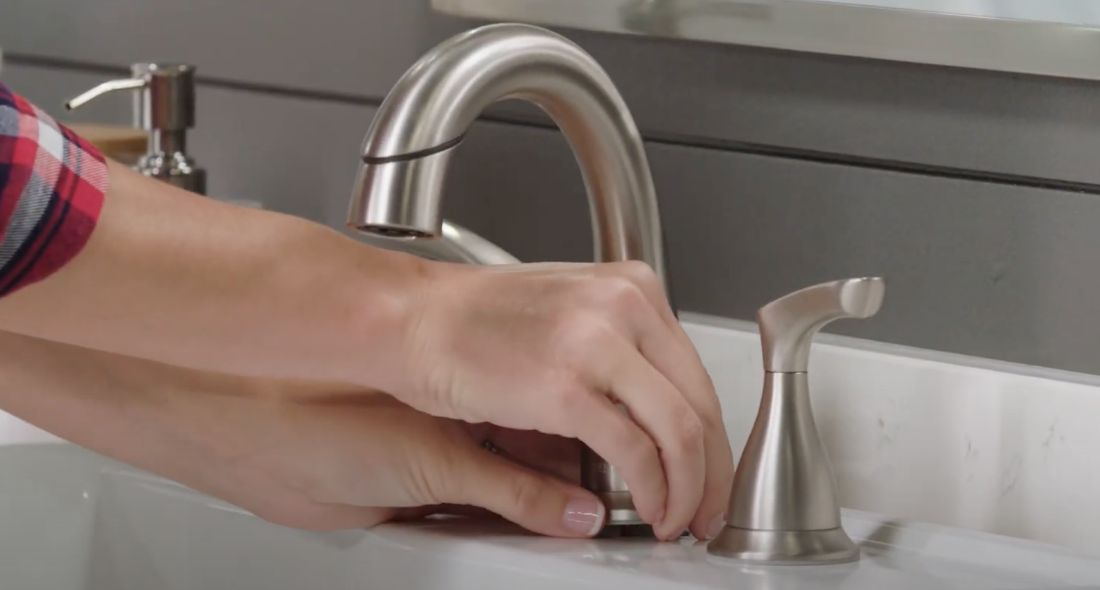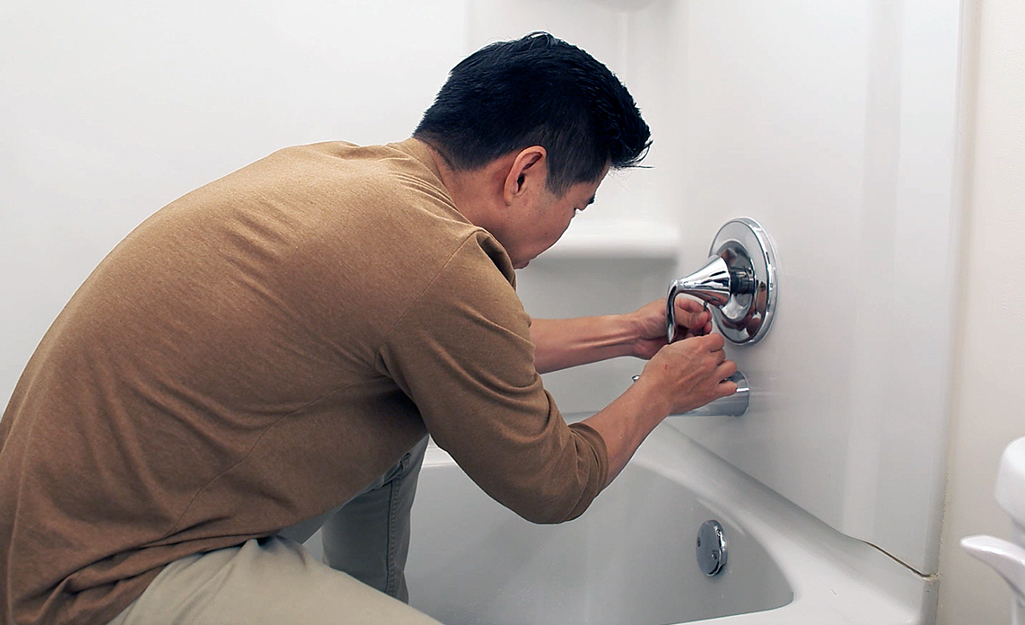On this page down the page you can locate some great tips in relation to Water Dripping from Faucet: Why and How to Fix.

Trickling faucets may feel like a minor aggravation, but their influence exceeds just the annoyance of the sound. From drainage to sustaining unnecessary monetary costs and health and wellness risks, overlooking a dripping faucet can bring about numerous consequences. In this article, we'll delve into why it's crucial to resolve this common family problem without delay and successfully.
Waste of Water
Ecological Effect
Trickling taps contribute substantially to water wastage. According to the Epa (EPA), a single faucet dripping at one drip per second can waste more than 3,000 gallons of water per year. This not only strains water resources yet likewise influences communities and wild animals based on them.
Step-by-Step Guide to Repairing a Dripping Faucet
Tools Needed
Before attempting to repair a dripping tap, collect the needed devices, consisting of an adjustable wrench, screwdrivers, substitute components (such as washing machines or cartridges), and plumber's tape.
Typical Faucet Issues and Their Solutions
Recognize the sort of tap and the specific issue causing the drip. Common problems include damaged washers, corroded valve seats, or malfunctioning O-rings. Refer to producer instructions or on-line tutorials for step-by-step assistance on repair services.
Financial Prices
Boosted Water Bills
Past the environmental impact, leaking faucets can inflate water expenses considerably. The collected wastefulness with time equates into higher utility expenditures, which might have been stayed clear of with prompt repair work.
Potential Home Damage
In addition, prolonged trickling can result in harm to fixtures and surface areas surrounding the faucet. Water buildup can cause discoloration, rust, and even architectural problems if left neglected, resulting in extra fixing prices.
Health and wellness Worries
Mold And Mildew and Mildew Development
The consistent presence of dampness from a leaking tap develops an excellent setting for mold and mold growth. These fungis not only jeopardize interior air quality yet likewise present health and wellness threats, especially for individuals with respiratory system conditions or allergies.
Waterborne Conditions
Stationary water in dripping faucets can end up being a breeding place for bacteria and various other microorganisms, increasing the danger of waterborne conditions. Contaminants such as Legionella bacteria prosper in stationary water, potentially bring about serious ailments when consumed or inhaled.
DIY vs. Professional Fixing
Advantages and disadvantages of Do It Yourself Fixing
While some may attempt to deal with a dripping faucet themselves, DIY fixings come with their very own collection of obstacles. Without appropriate expertise and devices, do it yourself efforts can aggravate the issue or lead to insufficient fixings, extending the issue.
Benefits of Hiring a Specialist Plumber
Employing a professional plumber ensures that the underlying source of the dripping faucet is attended to successfully. Plumbing technicians possess the competence and devices to diagnose and fix faucet issues successfully, conserving time and reducing the risk of more damage.
Ecological Obligation
Specific Payment to Conservation
Taking duty for taking care of dripping taps aligns with broader efforts toward water preservation and environmental sustainability. Every person's actions collectively make a considerable impact on protecting precious sources.
Lasting Living Practices
By focusing on punctual repairs and taking on water-saving habits, people contribute to sustainable living practices that benefit both present and future generations.
Preventive Measures
Normal Upkeep Tips
To stop trickling taps, perform routine maintenance such as cleaning aerators, examining for leaks, and changing worn-out components promptly. Furthermore, take into consideration setting up water-saving tools or upgrading to a lot more effective fixtures.
Significance of Prompt Fixes
Attending to dripping taps as quickly as they're discovered stops further water wastage and prospective damages, ultimately conserving both water and cash in the future.
Impact on Property Worth
Understanding of Well-Maintained Building
Keeping a residential or commercial property in good condition, consisting of resolving maintenance issues like trickling taps, enhances its regarded value and value amongst possible customers or renters.
Impact on Resale Worth
Qualities with well-maintained plumbing components, consisting of faucets, command higher resale values in the property market. Attending to trickling faucets can contribute to a favorable impression throughout residential property evaluations and arrangements.
Final thought
Resolving a leaking faucet surpasses simple ease; it's a crucial step towards saving water, lowering financial expenses, and securing wellness and property. Whether with DIY repair work or specialist support, acting to repair trickling taps is a little yet impactful means to advertise liable stewardship of resources and add to a healthier, more sustainable future.
How to Fix a Leaky Faucet: Step-by-Step Repair Guide
A leaky faucet may seem like a simple annoyance, but if it's not fixed promptly, that leak could cost hundreds to potentially thousands. From water damage to mold, mildew, and high water bills, even a tiny leak can be catastrophic if left unattended. Damage like this can even affect the overall value of your home, so it's important to take the right approach for leaky faucet repair. You may need the help of a plumber in some cases, but we've got a few tips you can try on how to fix a leaky faucet before calling the pros.
Four Faucet Types
When you're learning how to fix a leaky faucet, the first step is knowing what kind of faucet you're working with! There are four common types.
Cartridge Faucets
Cartridge faucets come in one- or two-handled varieties. In one-handled cartridge faucets, hot and cold water combines in a single cartridge. In the two-handled versions, hot and cold water are controlled separately and mixed in the faucet.
Ball Faucets
Ball faucets have a single lever you push up and down to adjust the pressure and rotate to change the temperature. A slotted metal ball controls the amount of water allowed into the spout.
Compression Washer Faucets
They're the oldest type of faucet, but they're still used in many homes — especially older ones. Compression faucets have two separate handles that, when turned, raise or lower the washer that seals a water valve. This valve stops water from flowing through the faucet when it is turned off.
Disc Faucets
Disc faucets rarely need to be repaired due to their maintenance-free design. The water flow is controlled by two discs — the upper one raises and lowers against a fixed lower disc, creating a watertight seal. If your disc faucet starts leaking, you may need to replace the seals or clean residue buildup from the inlets.
Fixing a Leaky Faucet
Step 1: Turn Off the Water
Whether you're learning how to fix a leaky bathtub faucet or how to fix a leaky kitchen faucet, always turn off the water supply to your working area when you're fixing a leak. The last thing you want is a flood added to your list of things to fix.
Look for the shutoff valves below your sink or around the tub and turn them clockwise to stop the water flow. If your faucet doesn't have shutoff valves, you may need to turn off the water for the whole house. Check to make sure it's off by turning the faucet on. If nothing comes out, you're ready to start the repair.
Step 2: Take Apart the Faucet
How you disassemble your faucet depends on the type of fixture you have. You can use a flathead screwdriver to remove the caps on top of the handle or handles for cartridge and compression faucets. Inside, you should see handle screws. Unscrew these with a screwdriver to remove the handle.
Disc- and ball-style faucets will typically have an inlet screw near the handle, and removing that will reveal the interior of the faucet.
Detach the Valve Stem
For cartridge- and compression-style faucets, you'll see the inner valve stem or cartridge once you remove the faucet handles. If you have a compression faucet, unscrew the brass valve stem. If you have a cartridge faucet, pull out the cartridge. If your cartridge has been in place for a while, it may require some tools or extra force to remove it due to mineral deposits.
Examine and Replace Parts
Once you've removed the parts, check them out to confirm what needs to be replaced. You may see corroded rubber washers, O-rings, stems, or cartridges. On a ball-style faucet, check the seats and springs for damage.
If you need to repair a leaky disc faucet, check the inlet and seals on the lower disc.
Once you determine what parts must be replaced, visit your local hardware store. Bring the damaged parts with you to ensure you can purchase the correct components to replace them.
Clean Valves and Faucet Cavity
If you've removed a stem or cartridge, you may notice mineral buildup in the faucet's threads. Use white vinegar to clean the valve seat by soaking it for a few minutes, then scrub it away with a soft toothbrush and rinse with warm water. You can also clean the interior of the faucet in the same way.
Reassemble the Faucet
Once your faucet is cleaned and the required parts have been replaced, it's time to reassemble it. Put the pieces back together and slowly turn the water supply back on. Doing this slowly is crucial because too much initial water pressure can damage the new hardware you've just installed.
https://homewarranty.firstam.com/blog/how-to-fix-leaky-faucet

We were made aware of that write-up about 4 Common Reasons for a Leaky Faucet from a pal on our other web property. Sharing is good. Helping people is fun. We appreciate your readership.
 Emilio Estevez Then & Now!
Emilio Estevez Then & Now! Kelly McGillis Then & Now!
Kelly McGillis Then & Now! Robert Downey Jr. Then & Now!
Robert Downey Jr. Then & Now! Charlie Korsmo Then & Now!
Charlie Korsmo Then & Now! Melissa Sue Anderson Then & Now!
Melissa Sue Anderson Then & Now!